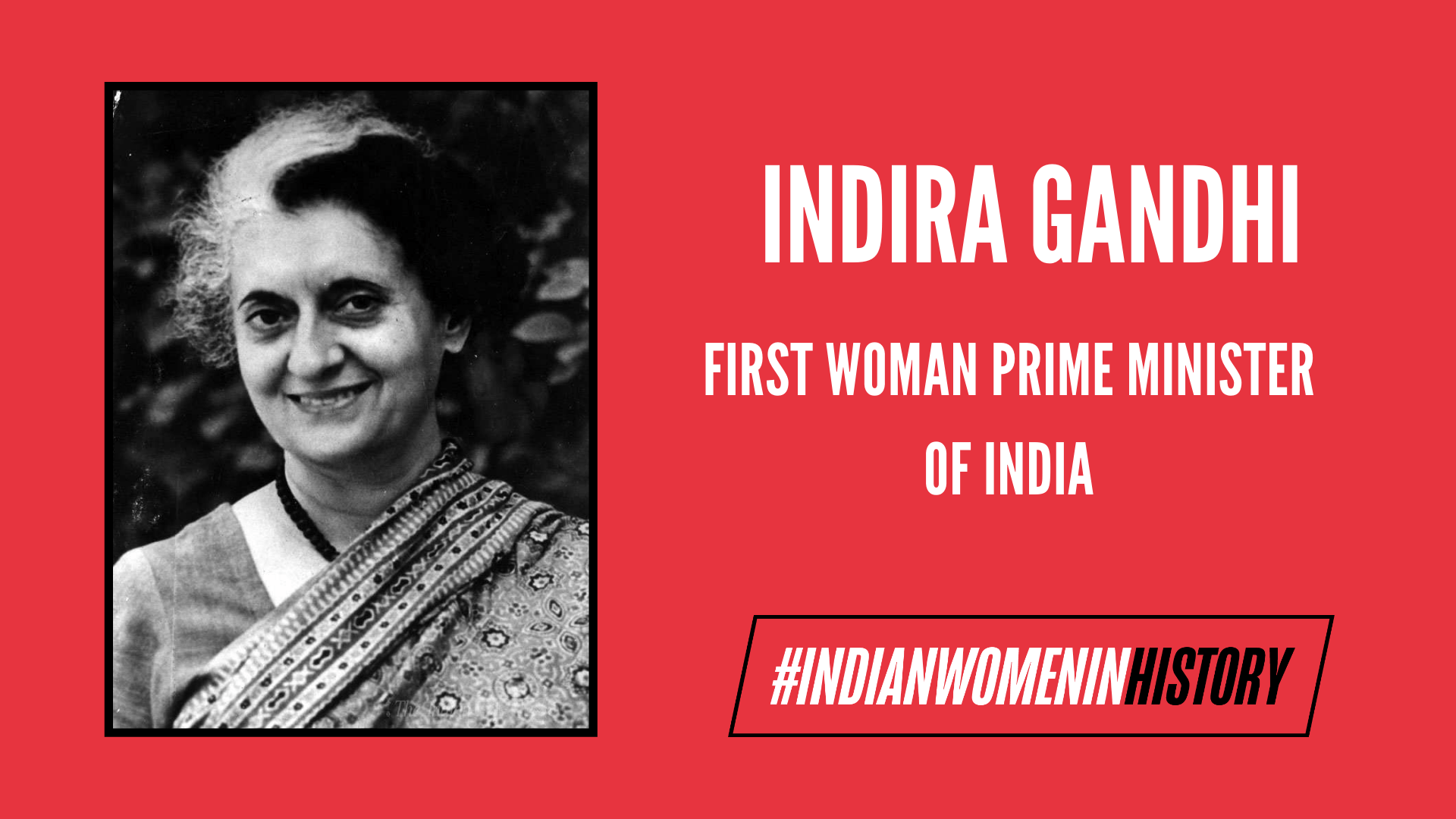“India is Indira. Indira is India” ~D.K. Barooh
Indira Gandhi, the first female Prime Minister of India, has to her credit a list of many firsts – not simply because she was a woman taking up space and roles that were deemed male-prerogatives in a typical patriarchal world, but also because her policy decisions have a profound impact on the process of nation-building in modern India. Most people refuse to see Indira as a feminist symbol. The refusal is reinforced by Gandhi’s own admission, “I’m not a feminist“. Instead, she identified herself as a “biform human being“, neither man nor woman. Yet Indira’s professional graph serves as a symbol of female empowerment, simply because for many women in India and across the globe – a saree clad woman running the government provided an avenue for association and identification, albeit a nascent one.
Early Life: Anand Bhavan Days
Indira Gandhi, born Indira Priyadarshini Nehru or Indu on 8th February 1916, was the sole surviving child of Jawaharlal Nehru, India’s first Prime Minister and Kamla Nehru. Amidst expectations of a male child from most family members, the birth of a daughter came as a disappointment to them, except Motilal Nehru and Jawaharlal Nehru. To her father, she was born into a world of ‘storm and trouble’ and would grow up amid another revolution. Her grandfather declared that she had the potential of being “better than a thousand sons”.
Indira then grew up in a loving household, which presented an atypical mixture of western liberalism and Indian traditionalism. Unlike her peers, Indira had a materially luxurious life and, unlike most women and many men of her age and time, received global education. She studied at institutions like Ecole Nouvelle, Bex (Switzerland), Ecole Internationale, Geneva, Pupils’ Own School, Poona and Mumbai, Shantiniketan and Somerville College, Oxford.
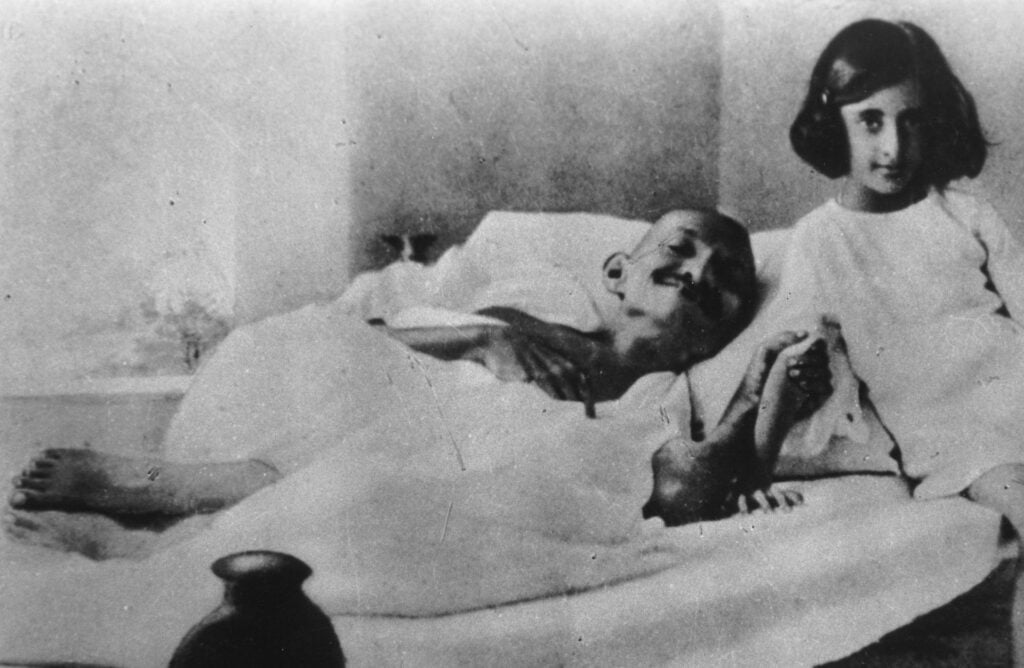
Coupled with a rich education, Indira’s own childhood environment was infused with the radical and revolutionary spirit of the National movement. In 1918, her parents joined the Indian National Movement alongside Mohandas Gandhi, leaving Indira often alone and “insecure“, given the frequent arrests of her parents and grandparents. Indira was four years old when her grandfather and father were jailed for the first time. All this added to her developing a politically aware conscience from a young age. The Vanara Sangh was perhaps her first foray into the revolutionary world of the Indian National Movement. The Vanar Sena, given its composition of 12-14-year-old children, served as an able disguise for passing messages between workers during the Non-Cooperation movement of the Indian National Congress (INC).
An atypical childhood then served as a foundation for an atypical life later.
President of INC to the Prime Minister of India
Indira’s political career may have started against her father’s wishes, but being the first Prime Minister’s daughter and his host at Teen Murti Bhavan meant that Indira had sufficient political resources at her command to leverage when it came to her desire for an active political life. Perhaps, Frank Moraes miscalculated when he said, “There is no question of Nehru’s attempting to create a dynasty of his own; it would be inconsistent with his character and career.”
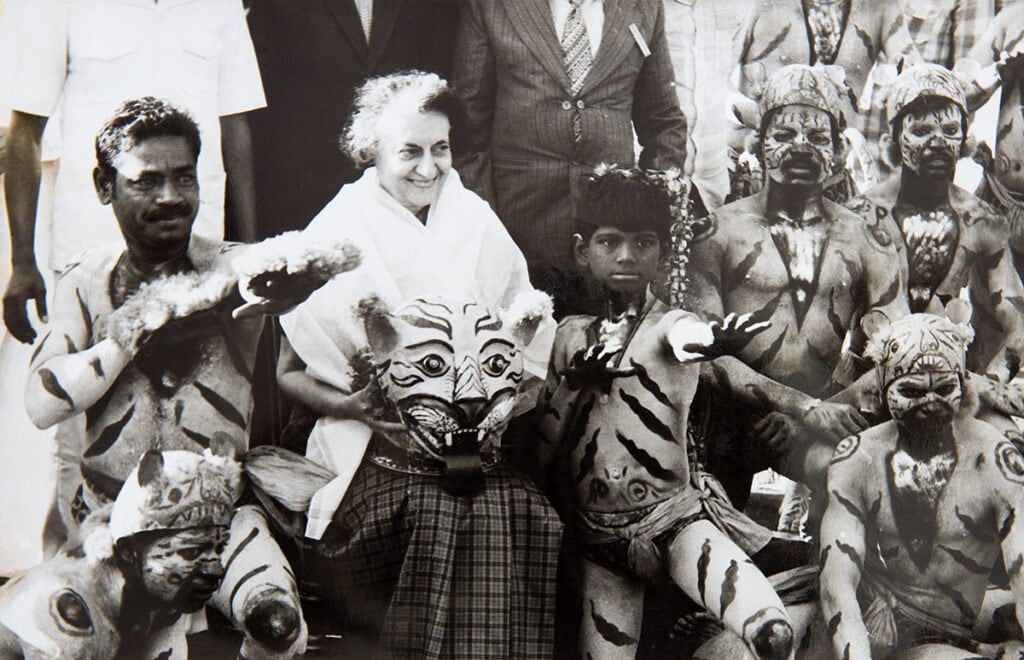
Indira first held a position of responsibility in 1959 when she became the Congress President—becoming the third woman and second Indian woman to lead INC. However, most dubbed the post as honorary, given that Jawaharlal Nehru held office at that time. Indira’s political career in the ‘realpolitik’ sense began after her father’s death in 1964. Under party pressure, incumbent Prime Minister Lal Bahadur Shastri gave Gandhi the insignificant portfolio of Information and Broadcasting Minister. Yet, this did not deter her from marketing her own political image.
On Shastri’s death in 1966 with support of the Kamraj camp and after a tough fight from Morarji Desai, Indira became the first woman Prime Minister of India, the second to hold the office from her family.
From struggling for Freedom to Curbing Freedom
Indira’s political career did not start either with her president days at INC or the assumption of office of Prime Minister. It began in the backyards of Anand Bhavan (renamed to Swaraj Bhavan), where a twelve-year-old wanted to help in the freedom movement. From her Vanar Sena days to her Quit India days – spent in jail, arrested on the same day as her husband Feroz; Indira’s politics was painted with aazadi (freedom). Paradoxically, her Prime Ministership saw the beginning of a populist era in Indian democracy as a fascist leader led India into an Emergency.
Also read: Kamaladevi Chattopadhyay: The Feminist Who Revived Indian Handicrafts | #IndianWomenInHistory
Baba Nagarjun’s poem rightly captures the fascist and draconian days of Emergency. He prodded Indira in his typical poetical satire on the breakdown of democracy.
“छात्रों के लहू का चस्का लगा आपको, काले चिकने माल का मस्का लगा आपको
किसी ने टोका तो ठस्का लगा आपको
अन्ट-शन्ट बक रही जनून में
शासन का नशा घुला ख़ून में, फूल से भी हल्का समझ लिया आपने हत्या के पाप को”
(You’re addicted to student’s blood, You’re addicted to the wealth of corruption
Any criticism makes you infuriated
You’ve lost all sense of righteousness as you speak, drunk on power
With Dictatorship dissolved in your blood, You’ve taken even murder nonchalantly)
The poem is also remarkable for Nagarjun’s dig at Indira’s ironic political graph.
बचपन में गांधी के पास रहीं,तरुणाई में टैगोर के पास रहीं, अब क्यों उलट दिया ‘संगत’ की छाप को?
(You spent your childhood with Gandhi and adolescence with Tagore, why now have you changed the mark of companionship?)
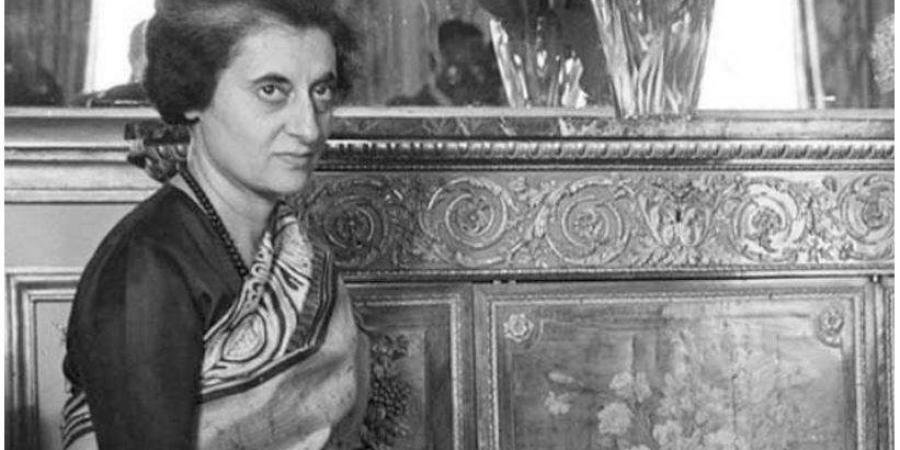
With freedom of the press taken away, most Members of Parliament jailed and the rewriting of the Constitution with the 42nd Amendment Act, Indira divorced herself from the liberal-democratic legacy of her father. The Emergency saw the rise of Sanjay Gandhi and the Kitchen Cabinet that ruled India autocratically – with forced sterilization, urban makeovers and censorship. Indira’s “Gareebi Hatao” (Eradicate Poverty) soon became “Gareebon ko Hatao” (Remove the Poor).
Ramachandra Guha in India After Gandhi notes that Indira, upon declaration of Emergency, leveraged her gender identity by creating a ‘mother figure’ who had to take a radical step such as Emergency only in the greater interest of the Nation.
A daughter of a patriarchal family became the self-appointed matriarch of the Nation.
As Guha notes, four months into the Emergency, the prime minister came for a meet and greet over a microphone to ‘have a heart to heart with her countrymen’. She said,
“However dear a child, maybe, if the doctor has prescribed bitter pills for him, they have to be administered for his cure…So we gave this bitter medicine to the Nation.”
The Emergency was closely linked with another political development in India’s North – The Khalistani movement. Indira’s lackadaisical approach and the desire to limit the Akali opponent meant that the nascent movement was allowed to evolve, a political miscalculation that ultimately culminated with the disastrously planned Operation Blue Star.
On the morning of 31st October 1984, Indira was assassinated by her Sikh bodyguards in the morning at her Safdarjung House Road. The Congress bestowed martyrdom on the dead Prime Minister and in its wake followed the 1984 pogrom, state-supported that ultimately led to killings of thousands of Sikhs in India.
From Sexualization to Villianisation: Dissecting Indira’s private life
In a patriarchal state, female sexuality is always a matter of tension and contestation. It’s also often the most accessible weapon of slandering any woman who holds any power. Media and opposition’s obsession with the prime minister’s private life was likely an extension of this tendency – of de-pedestalising one’s female opponent by dissecting her personal life.
She married Feroze Gandhi in 1942, the same year when they both were jailed for participating in the Quit India Movement. Her marriage to Feroze often became a dominant point of discussions. The rumour mill was running with questions on Feroze’s religious identity. However, the rumour mill was yet to complete its course – throughout most of her political life, Indira continued to be “linked up” with many men: from Dinesh Singh, a minister in her first cabinet, to her yoga guru and power figure of the 1970s – Dhirendra Brahmachari.
Also read: Padmaja Naidu: The Longest Serving Female Governor | #IndianWomenInHistory
After the phase of sexualizing Indira ended, her private life as a ‘mother-in-law’ became the centre of discussion. Her ‘initial aversion’ to Sonia and her ‘despise’ for Maneka became a prominent media trope. Political differences between Maneka and Indira became coalesced with the more popular “saas-bahu aur saazish” (A common Hindi phrase referring to ‘kitchen politics’ between mother in-laws and daughter in-laws) and narrative. Indira was now also a villain.
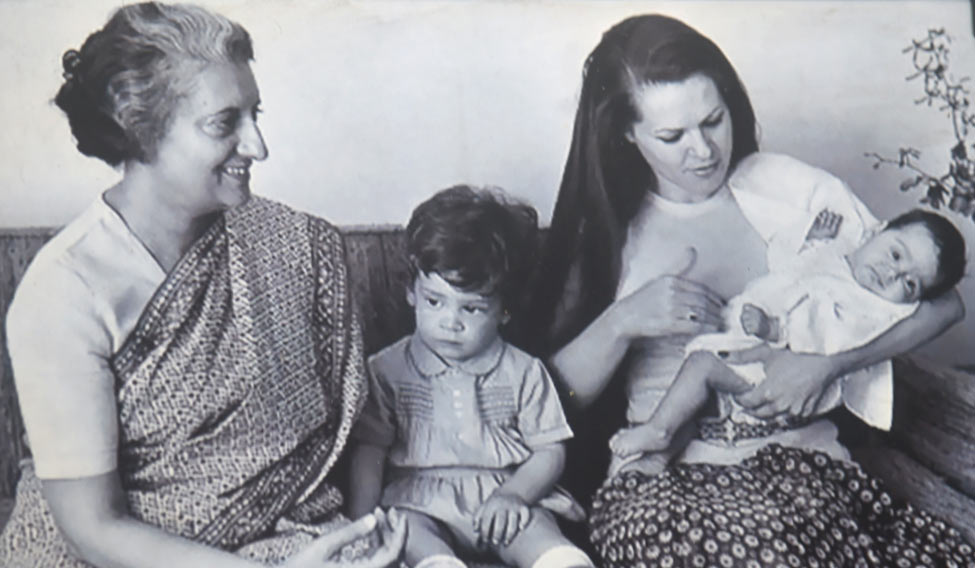
Dismissing a political opponent is the natural move in any realpolitik scenario. For female politicians, their sexuality often becomes the pivotal axis of slandering. Indira then was no exception. Perhaps this experience has led most female politicians of India to dissociate themselves from any connotations of sexuality. They are the desexualized – ammas, behenjis and didis.
A Forgotten Legacy and A Cautionary Lesson
Indira Gandhi’s premiership is notable for many achievements too. She initiated India’s first Nuclear Tests in 1974, also called Pokhran I, laying the foundation for subsequent nuclear development. Her implicit and explicit support for Bangladesh’s liberation movement was a watershed in India’s history and that of the entire subcontinent. Her foray into sciences aided the advent of the Green Revolution, allowing India to overcome its problem of grain deficit, thereby making it self-sufficient. Her patronisation of the Indian Space and Research Organisation (ISRO) allowed India to lay the foundations for a self-reliant space programme. Inspite of Indira’s many successful endeavours, her legacy will always remain tainted with the fascist imprint of Emergency. Yet, her assumption of office was a landmark in Indian history.
For a paternalistic state to elect a female prime minister allowed women to find a symbol of association, if not an ally.
Indira is also testimony that all-female agency is not necessarily feminist agency – her approach to slum restoration and beautification movement and forced sterilization initiatives are only a few examples of her many anti-feminist acts. Thus, she’s a didactic symbol too for all of us, that as feminists, we must introspect our acts and actions. Our holding of an agency may not always be contributing to the feminist cause. Sometimes it might be counterintuitive too. The best defence against these blindspots then is introspection and deliberation.
About the author(s)
Harshita is a public policy consultant working at the intersection of gender, climate change, and disability. An alumna of Jesus and Mary College, University of Delhi, and the Institute of Development Studies, University of Sussex, her work draws on her training in History and Development Studies to unpack gender as a social and structural construct.
